Research Interests
Transport and mixing in fluid flows
Mixing of fluids is central to many natural processes and engineering applications, including food processing, plankton blooms, and contaminant remediation in groundwater. In turbulent flow, mixing is easy, but generating turbulent flow is not always possible, for instance if the fluid is very viscous. Mixing in laminar flows can be highly efficient, but it is difficult to predict flow parameters that yield good, fast mixing. I study mixing from a dynamical systems standpoint. We gain a deeper understanding of the mechanisms that drive mixing by considering properties such as periodic points, bifurcations, and manifolds.
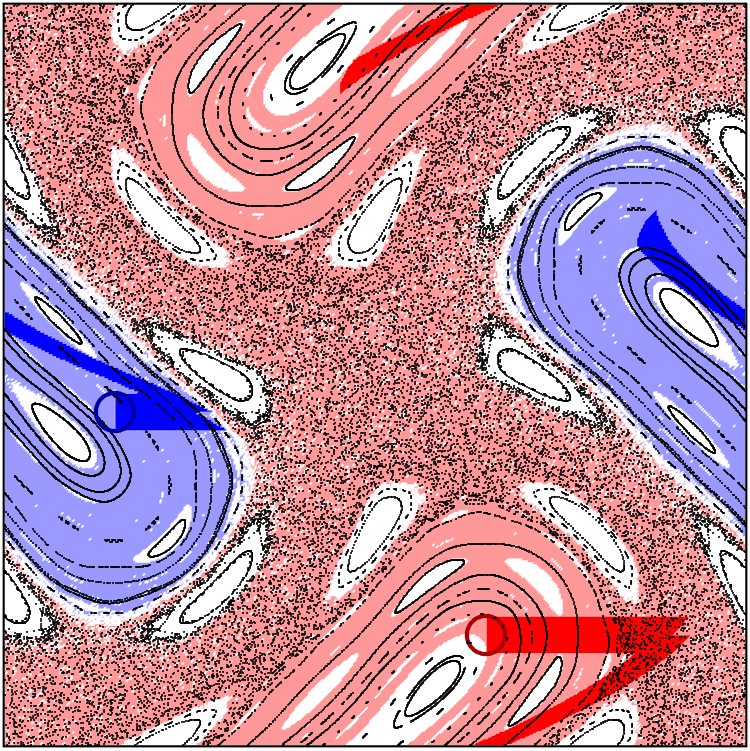
|
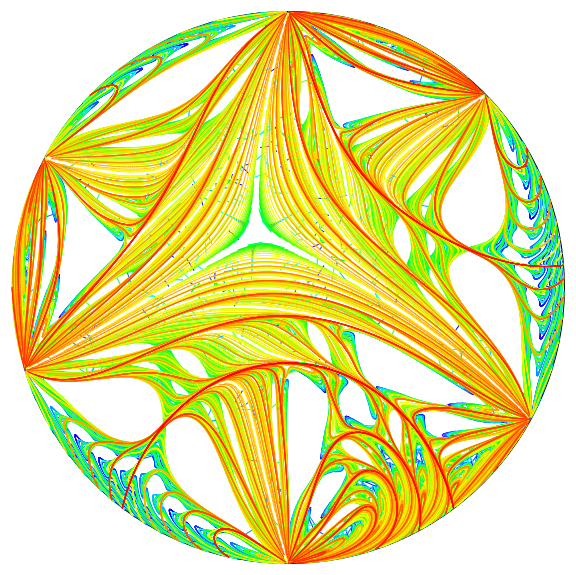
|
Piecewise isometries: mixing in granular media
Mixing of granular media presents additional challenges to mixing fluids, they can flow like a fluid but consist of discrete particles at a macro scale. Therefore, discontinuities can arise. I have studied mixing of granular materials in the Biaxial Spherical Tumbler flow, which can be approximated as a piecewise isometry, i.e., a cutting and shuffling motion. Many of the concepts from dynamical systems theory translate to piecewise isometries, but complications arise due to the presence of discontinuities. I have sought to bridge the gap between dynamical systems theory for smooth systems (like fluid flows) and dynamical systems theory for piecewise isometries.
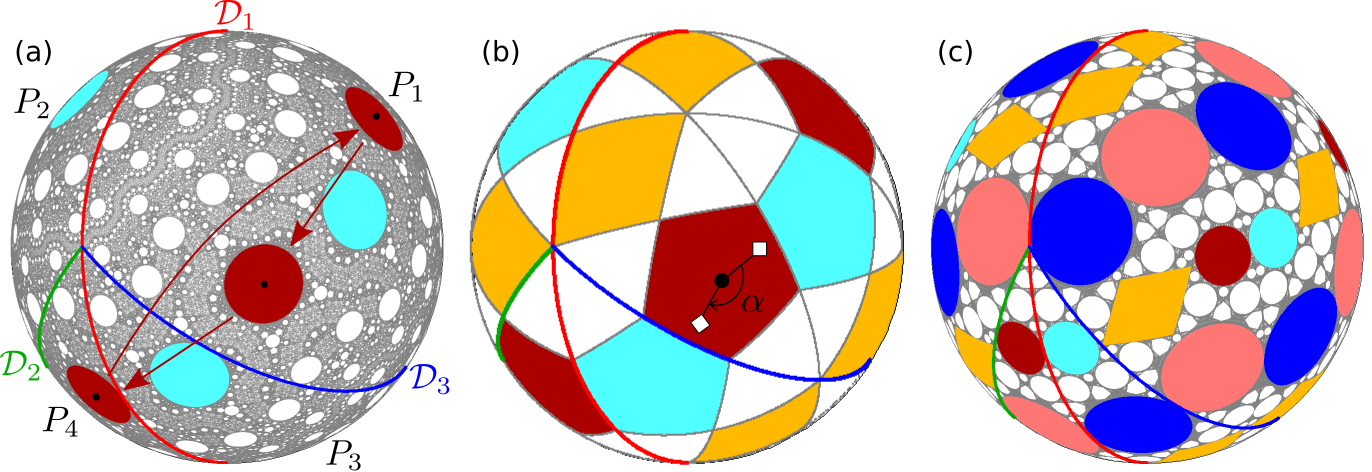
Piecewise isometries are the mathematical language that describes twisty puzzles, such as the Rubiks cube, Marusenko sphere, and Cohen circle. I have made an attempt to classify piecewise isometries geometrically, which encompasses the different classes of twisty puzzles, as well as the Biaxial Spherical Tumbler flow. In doing so, I introduce a new descriptor for piecewise isometries: time-continuous piecewise isometries, which are those that can be performed on a solid body in a time-continuous manner, such that the solid would not have to intersect itself. These time-continuous piecewise isometries are easier to implement in practice, such as twisty puzzles.
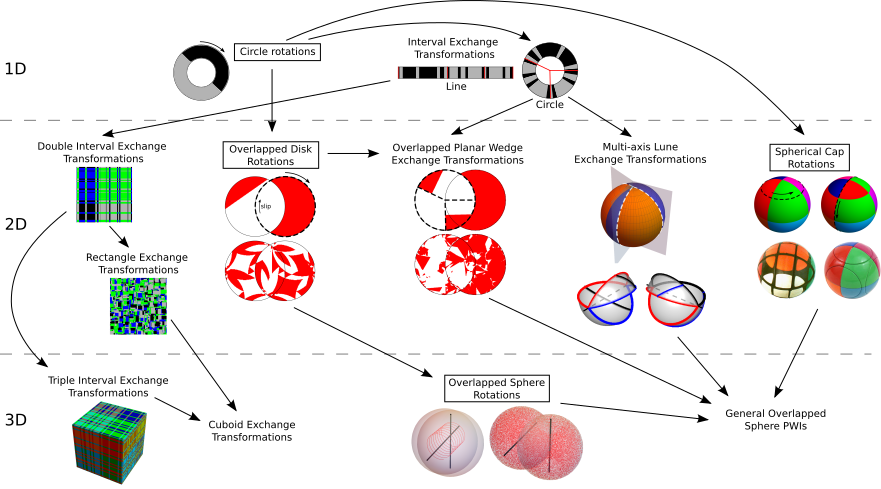
Collective behaviour in networks
Collective behaviour in networks of dynamically linked entities is common to many natural processes and industrial applications, including coordinated firing of neurons in the brain and synchronization of powergrids. I study the collective behavior of dynamically linked oscillators, which undergo spontaneous transitions to synchronization. There are many factors that need to be considered, including the coupling function, the network topology and the distribution of natural frequencies of the individual oscillators. I am especially interested in reducing the dynamics of a large number of oscillators to a small number of active degrees of freedom. This reduction allows a more detailed analysis of the complex dynamics.
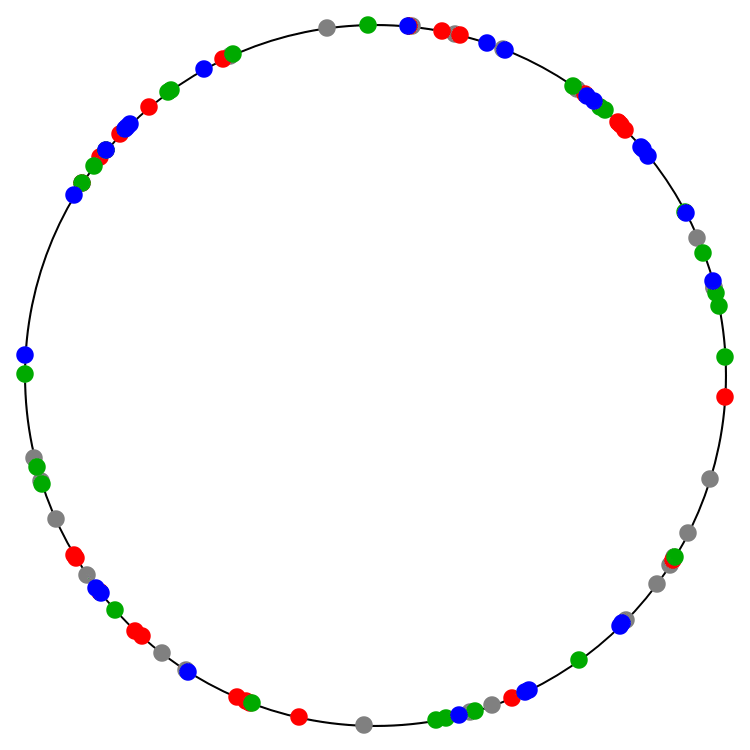
|
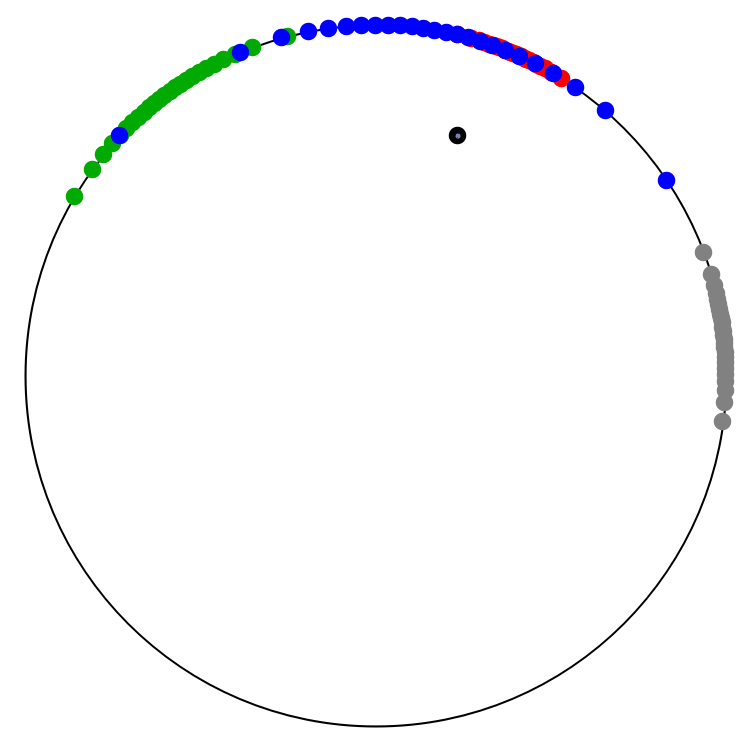
|